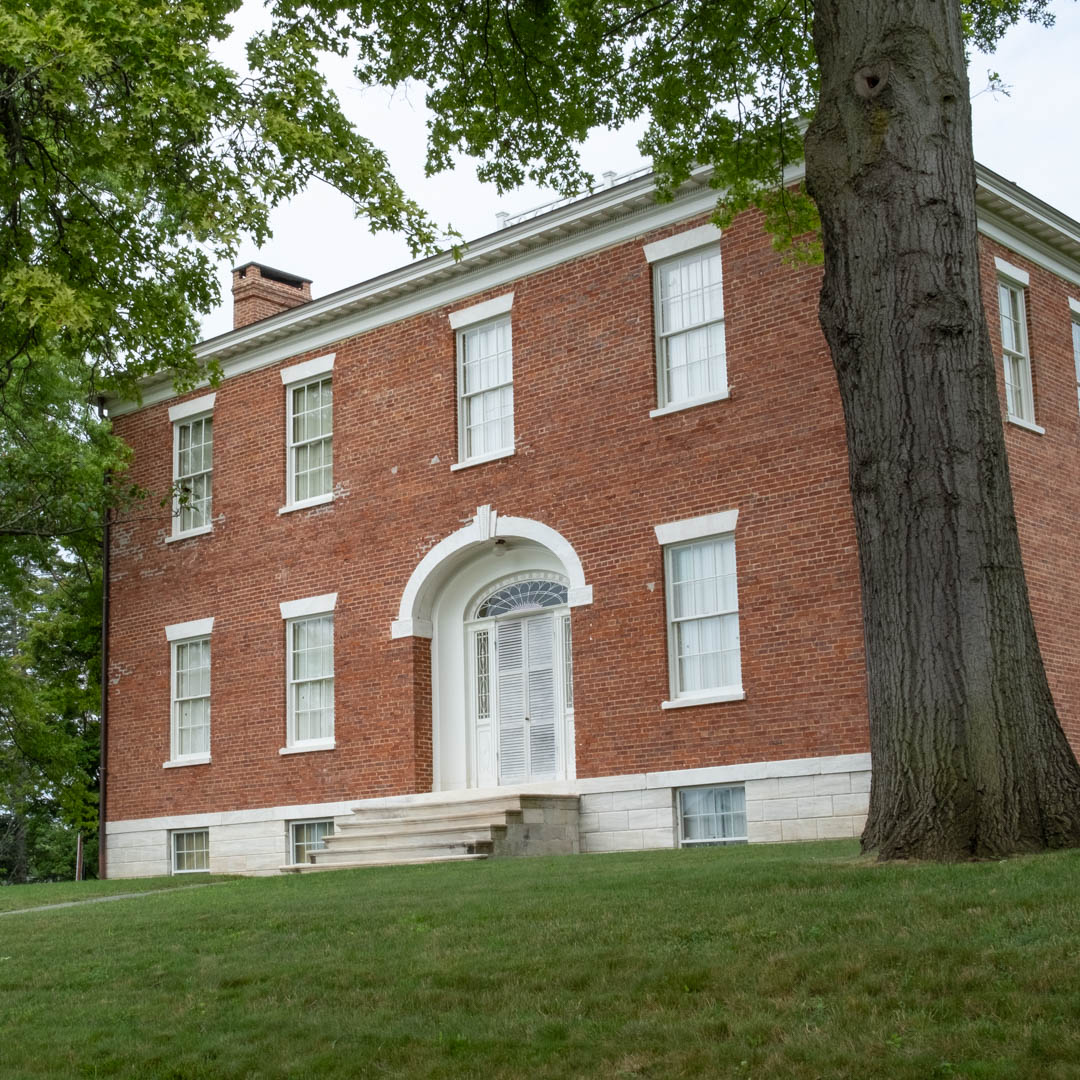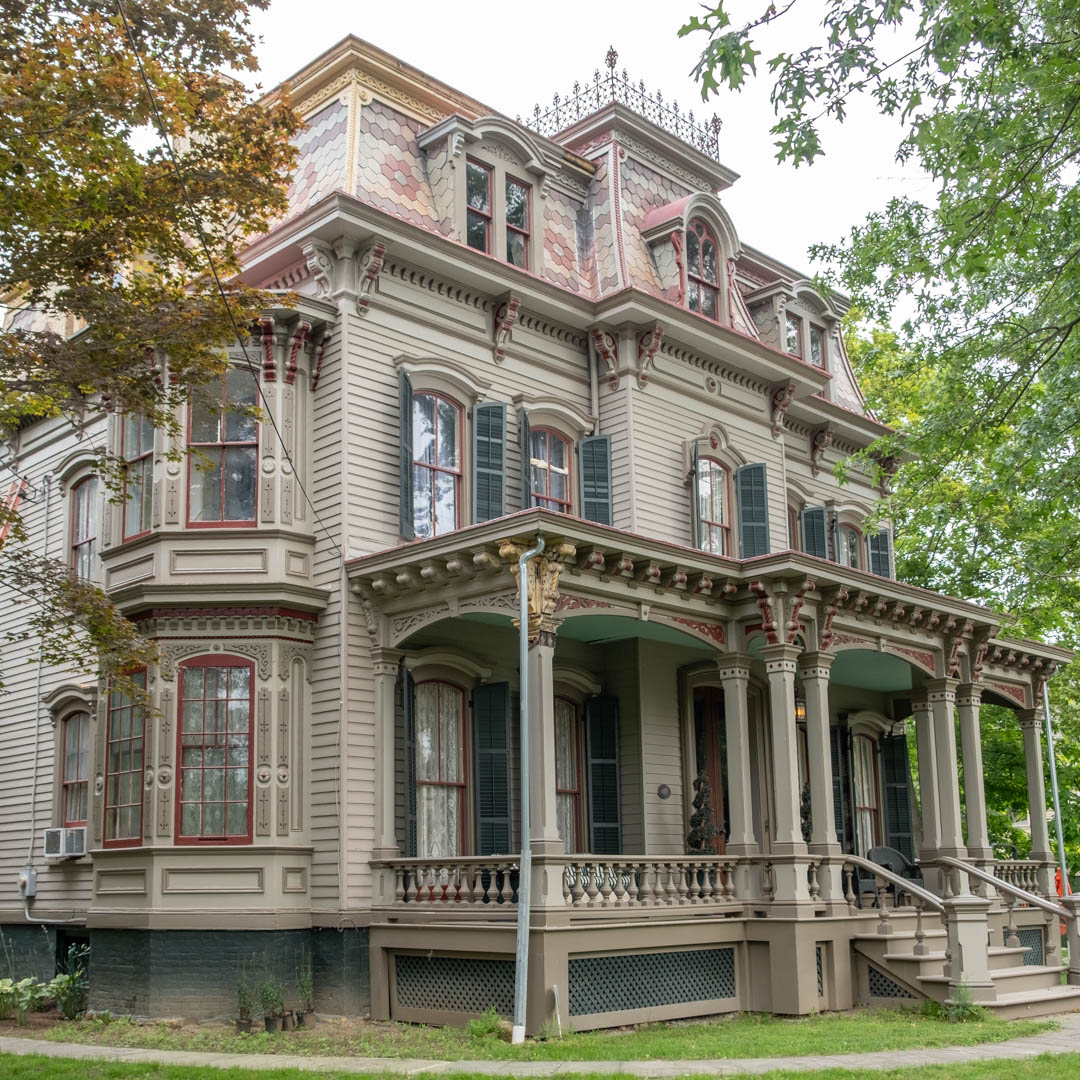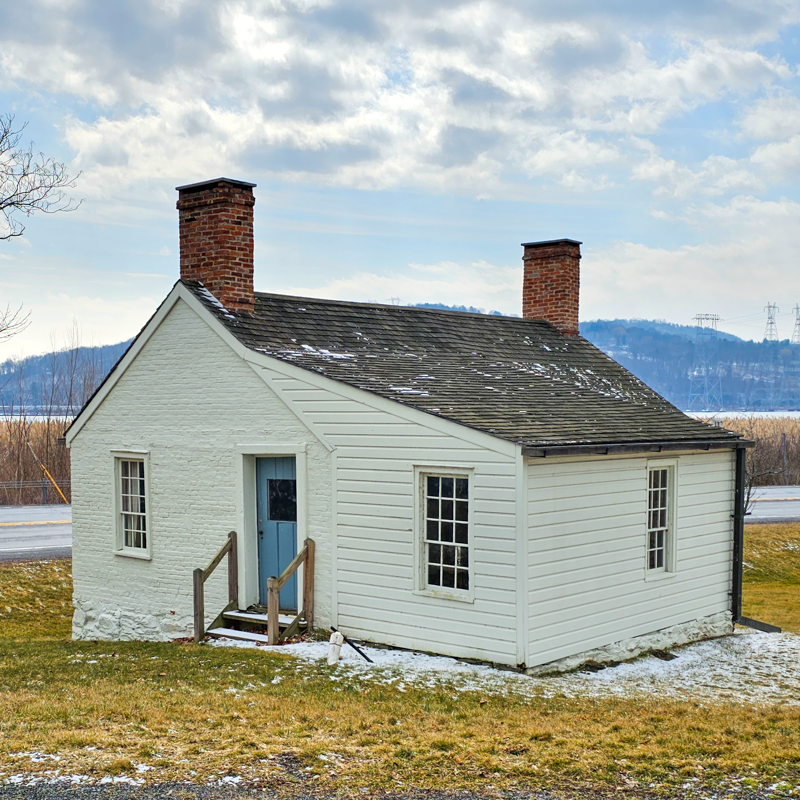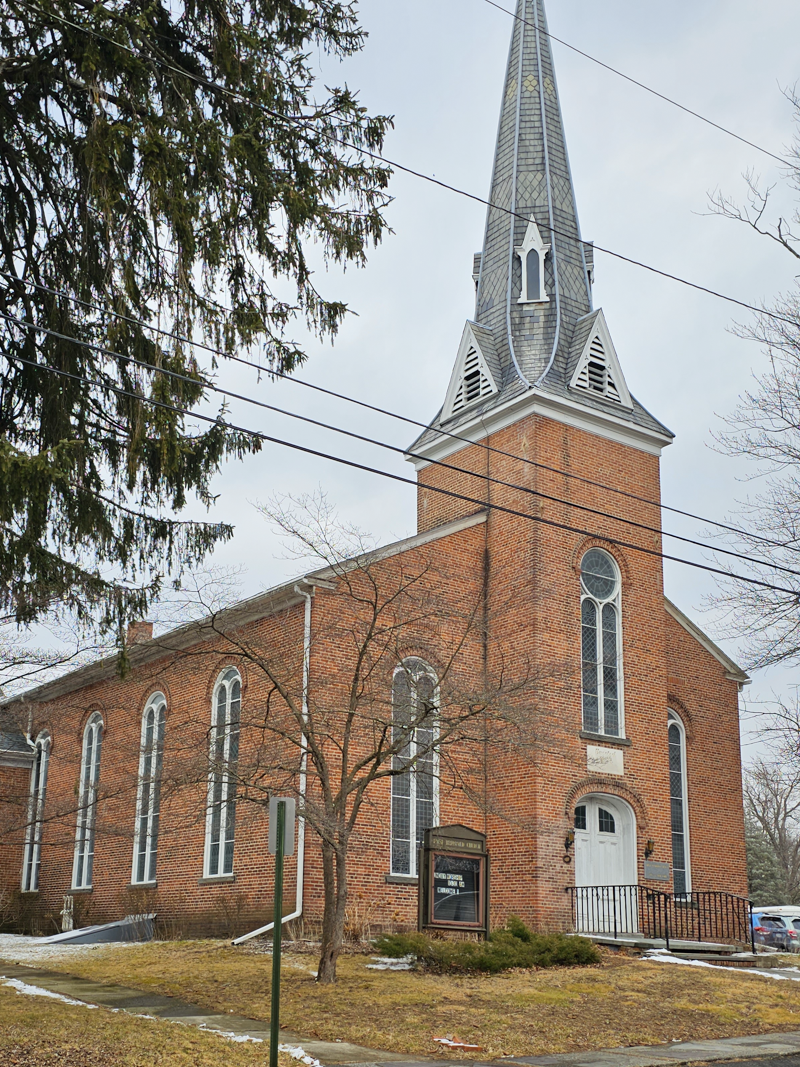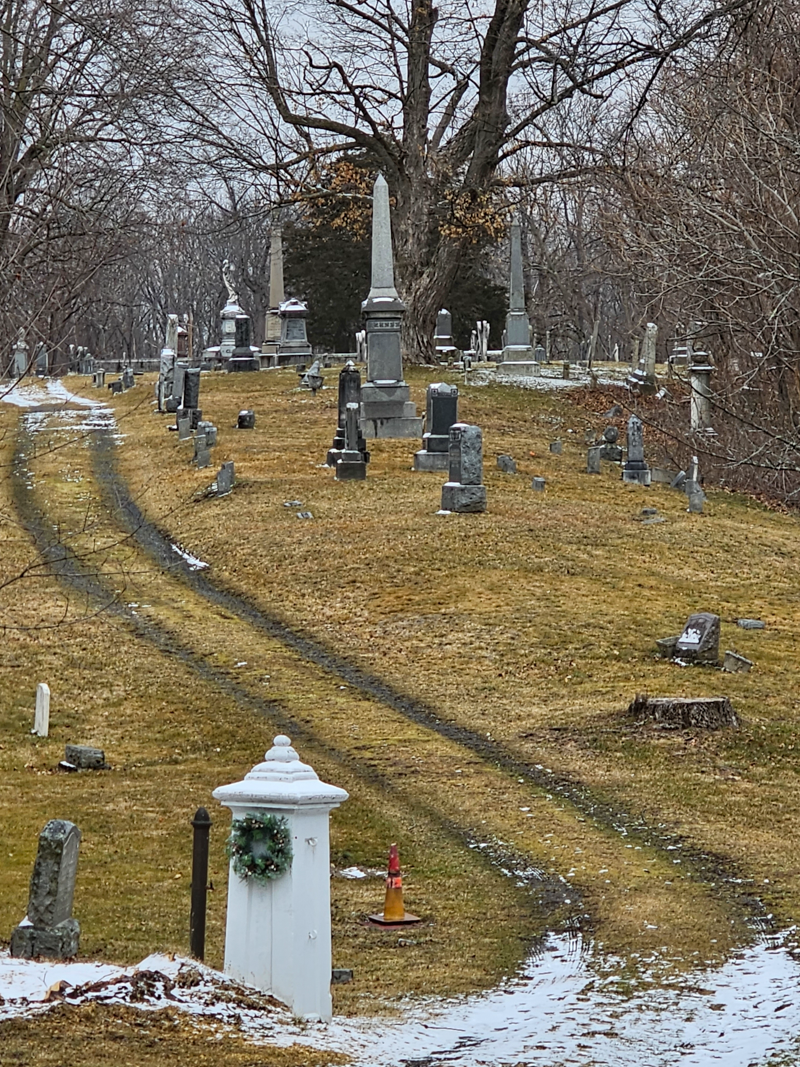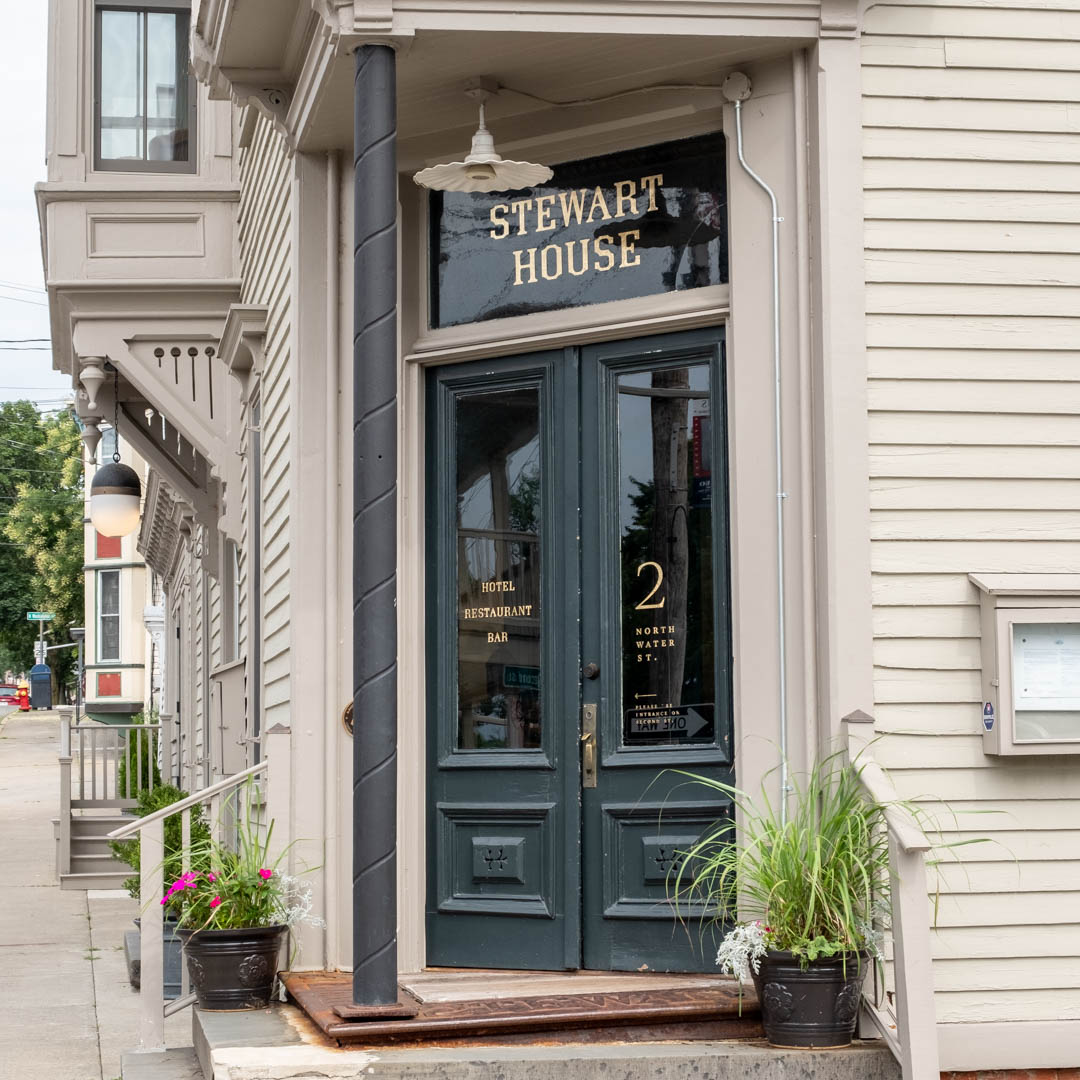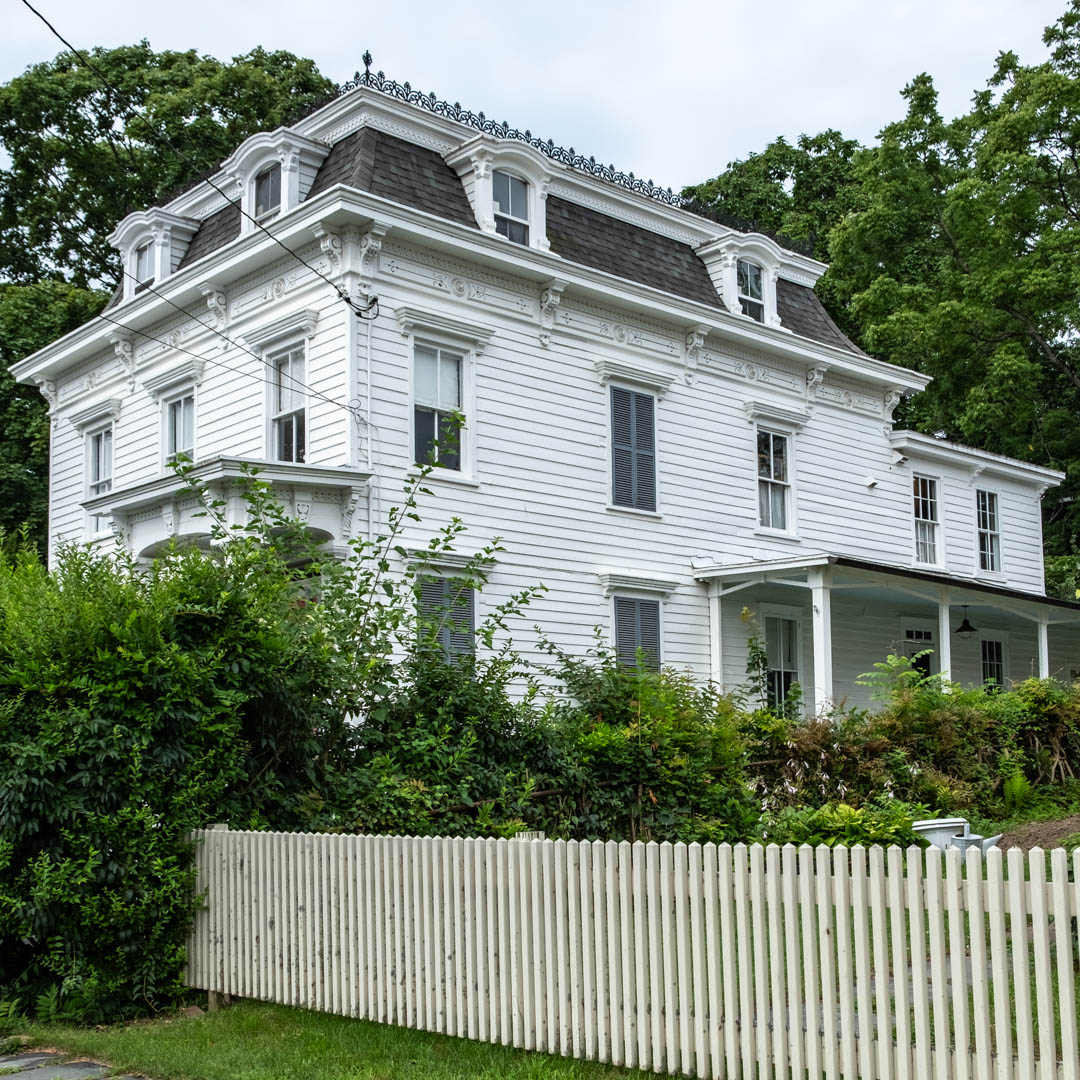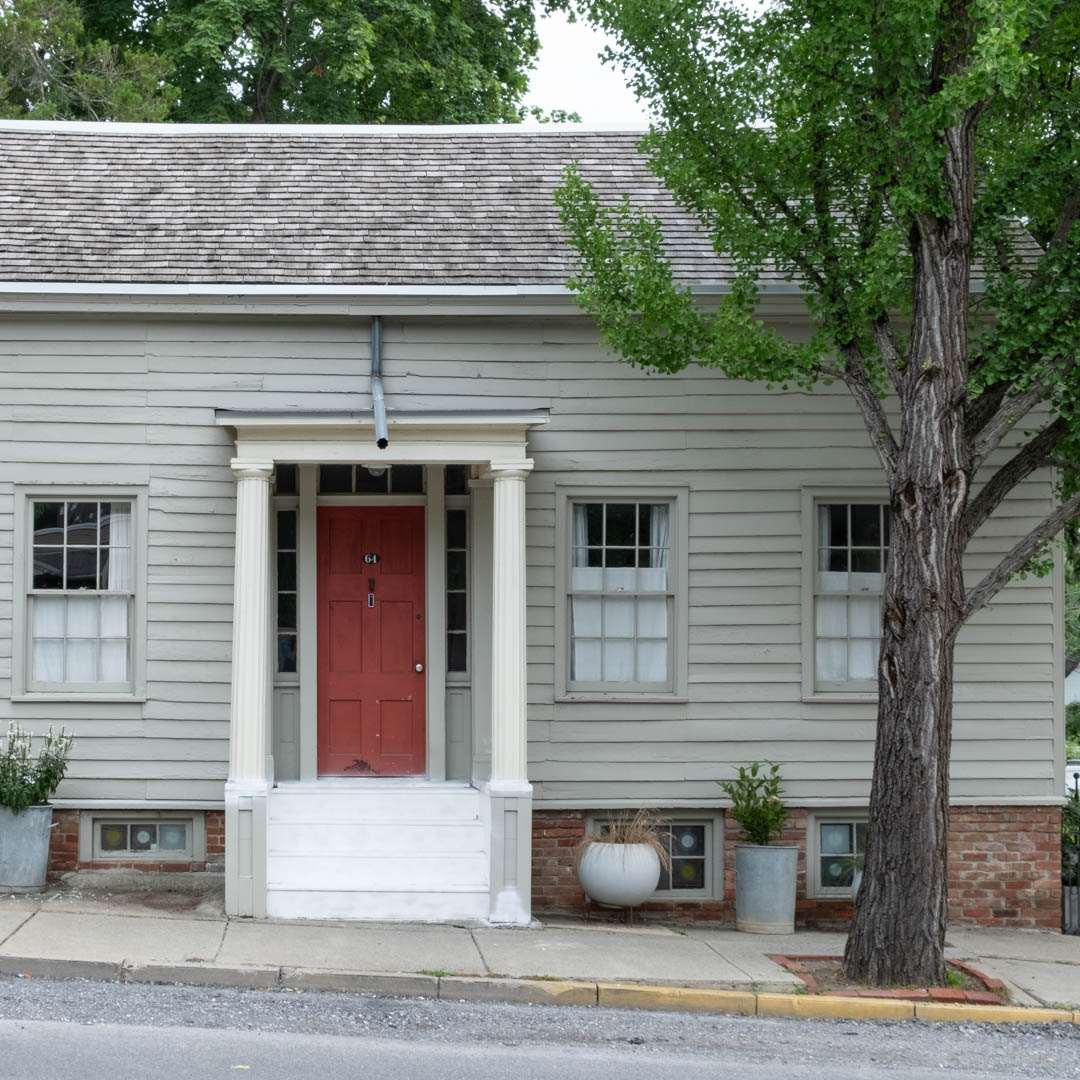HAIGHT-GANTLEY-VAN LOAN HOUSE (1815)
This private residence is not open for interior tour.
The Haight/Gantley/Van Loan house is the best known house in Athens. It is referenced in several publications as a particularly fine example of Federal architecture, designed by the architect Barnabas Waterman.
General Samuel Haight, soldier and merchant, chose the site for its panoramic view of the Hudson River. Before the house was completed, General Haight was called into active service in 1812. His wife, the former Jane Van Loon, a descendant of the first Van Loon patentee, was a woman of great social ambition and desired an oval ballroom like those in fashionable New York City mansions. When General Haight returned from the War of 1812, he found that the rectangular house now included an oval ballroom at the rear! On November 1, 1817, a Grand Open House was held. Etched into a pane of glass looking out on the verandah are the names of Samuel Haight, William Haight (his son), and Lydia Haight, William’s wife.
Daniel W. Gantley, the “owner” from 1848 to 1905, was a wealthy merchant who, with his wife, Maria Hosmer, and family in tow, made the move from New York City to Athens in 1848. In his youth he had been the youngest passenger in Robert Fulton’s steamboat The Clermont, and according to Van Loan family lore, he had spied this house from the river and decided he would like to live in it someday. Daniel Gantley was loved and revered by several generations in his lifetime. He lived to the ripe old age of 94, and died at his home on March 8, 1881.
In 1905 Thomas Van Loan of Brooklyn, a coffee and spice import and wholesale merchant—and a descendant of Jan Van Loon—bought the property from the Gantley heirs. In 1912, Thomas persuaded his son, Eugene Van Loan, and Helene, Eugene’s wife, to take up residency on the Athens property. Thomas’ extensive collection of paintings and objets d’art was moved to Athens. Paintings by European and American artists such as Church, Kensett, and Cropsey, among others, hung in tiers on every wall space of the ballroom, the halls, and the bedrooms, Thomas also built an addition for a new kitchen wing to replace the outmoded 19th-century area beneath the ballroom.
Eugene Van Loan’s children, Mary Helene, Eugene, Jr., and Jane, grew up in this house. Being community-minded, Mrs. Eugene Van Loan opened her home to various civic groups for meetings and for special occasions. The young people of Athens in the 1930s and 1940s remember that the highlights of their Christmas holidays were the dances held in the oval ballroom.
In 1968 a Coxsackie merchant, Francis Hallenbeck, and his wife, Catherine, purchased the part of the property belonging to Eugene Van Loan, Jr., exclusive of the small Jan Van Loan house (to the east). In 2006 the property, including the mansion, the carriage house, and “the necessary” —the privy —were purchased by Ashton Hawkins and Johnnie Moore who restored this home with care and sensitivity. The current owners continue this project.
If you are walking through Athens today, the Matthias Van Loon House is a block north at 30 South Franklin St. The Jan Van Loon House – one of the oldest residences in New York State – is just east along Route 385 at 5 Fifth St.
